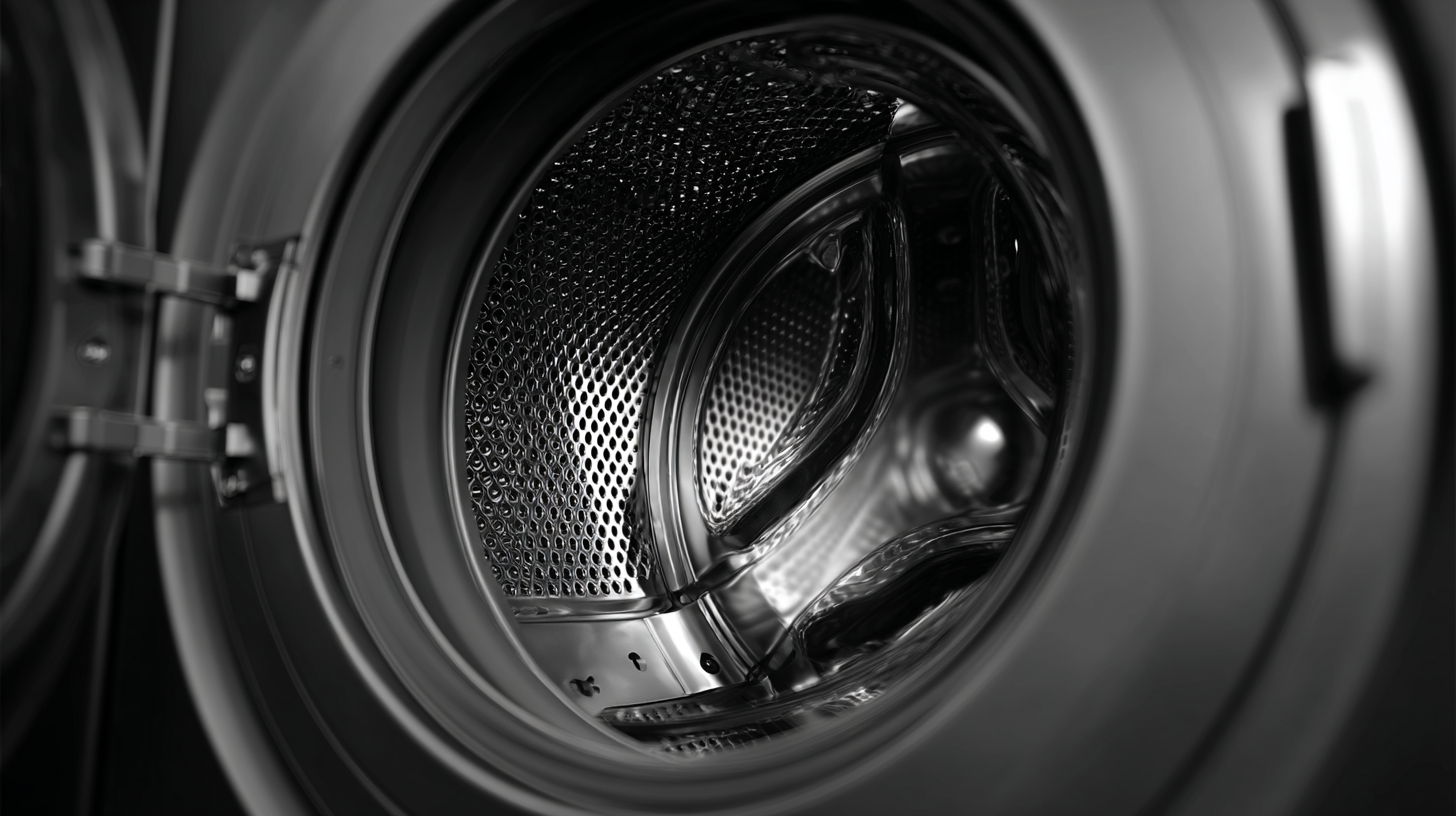In the competitive world of self-service laundry, efficiency is one of the most important drivers of profitability and customer satisfaction. A well-run laundromat reduces operating expenses, increases throughput, and creates a better overall customer experience. This article outlines ten specific, actionable strategies to help you improve the operational efficiency of your laundromat, from equipment upgrades and layout design to staff workflows and data-driven decisions.
1. Upgrade to High-Efficiency Washers and Dryers
Replacing older machines with high-efficiency commercial washers and dryers is one of the most impactful improvements you can make. These machines are engineered to use less water, electricity, and detergent per cycle. For example, a high-efficiency front-load washer may use up to 50 percent less water than a traditional top-loader while handling larger loads.
Dryers with moisture sensors shut off automatically when clothes are dry, saving energy and reducing wear and tear on garments. Modern HE machines also offer faster cycle times, increasing the number of customers you can serve per day. Though the initial capital investment may be substantial, the long-term savings on utilities and repairs typically provide a strong return on investment within a few years.
2. Implement a Centralized Digital Payment System
Coin-operated laundromats are increasingly being replaced by digital and hybrid payment systems that support cards, mobile apps, loyalty accounts, and NFC-enabled wallets. A centralized payment platform simplifies transaction tracking, reduces theft and vandalism, and allows for real-time monitoring of machine status and revenue. These systems often include customer-facing apps that display machine availability, send notifications when cycles are complete, and enable remote payments.
Operators benefit from faster payment reconciliation, the ability to offer variable pricing based on time of day, and automated reporting that can inform business decisions. Integrating all machines into a single, cloud-based platform also supports marketing efforts, such as offering loyalty rewards or promotions during off-peak hours.
3. Optimize Interior Layout for Flow and Accessibility
The layout of your laundromat directly impacts customer throughput and overall satisfaction. Begin by mapping customer movement from entry to machine use, folding, and exit. Machines should be arranged to minimize congestion and allow for clear line-of-sight between washers and dryers. Folding tables should be centrally located and large enough to accommodate multiple users simultaneously. Place utility items such as vending machines, laundry carts, detergent dispensers, and seating areas in easily accessible but non-obstructive areas.
For wash-dry-fold services, set up a dedicated back-of-house area with well-defined work zones, labeled bins, and task-specific stations to streamline intake, processing, and order completion. Signage should be clear, visible, and multilingual if your customer base is diverse. A clean, well-lit, and organized environment encourages repeat visits and supports a more efficient operation.
4. Establish a Preventive Maintenance Schedule
Machine downtime is one of the most expensive inefficiencies in the laundromat business. A structured preventive maintenance schedule helps avoid costly repairs and ensures machines remain in optimal working condition. Regularly inspect hoses, belts, motors, filters, and door seals. Lubricate moving parts and clean lint traps, detergent compartments, and water inlet screens on a weekly or biweekly basis.
Document all maintenance activities using a checklist or maintenance software, and consider working with a local service technician for quarterly inspections. Many commercial laundry management systems can track machine usage hours and alert you when service is due. Keeping spare parts on hand for common issues such as belt replacements or electronic interface failures can reduce downtime and prevent lost revenue.
5. Install Energy-Efficient Lighting and Water Heating Systems
Lighting and hot water are two of the highest utility expenses in a laundromat. Replacing fluorescent or incandescent bulbs with LED lighting can cut energy costs significantly while improving the look and feel of your facility. Add occupancy sensors in low-traffic areas such as restrooms or utility rooms to ensure lights are only used when needed. Water heating, which accounts for a large share of monthly utility bills, can be optimized by switching to tankless water heaters or incorporating solar water heating systems.
These systems heat water on demand or supplement heating with renewable energy, reducing waste and lowering long-term costs. Insulating hot water pipes and using low-flow valves also contributes to operational efficiency without compromising performance.
6. Train Staff to Prioritize Tasks and Reduce Waste
Employees can greatly influence the efficiency of your laundromat, especially if you offer attended services such as wash-dry-fold or customer assistance. Provide formal training on how to prioritize tasks based on demand. During busy periods, staff should focus on high-impact responsibilities like machine turnaround, customer service, and keeping common areas clean. During slower hours, they can restock supplies, clean less frequently used equipment, and prepare for upcoming shifts.
Standardize daily opening and closing checklists to ensure consistency and reduce idle time. Encourage proactive customer service behaviors such as offering help to first-time users or resolving machine issues promptly. When staff are organized, well-trained, and motivated, they improve customer satisfaction and keep operations running smoothly.
7. Launch Wash-Dry-Fold or Pickup and Delivery Services
Adding value-added services like wash-dry-fold or pickup and delivery can help maximize machine usage during non-peak hours and increase revenue per square foot. These services appeal to busy professionals, families, and commercial accounts such as salons and gyms. A well-run wash-dry-fold operation should follow a standardized process that includes order intake, weight verification, customer preferences, item separation, labeling, and order staging.
Use barcoding or order management software to reduce errors and track turnaround times. For delivery services, route planning software helps reduce fuel costs and ensures timely pickups. Offering tiered pricing or subscription packages can improve customer retention while smoothing demand over time.
8. Analyze Machine Usage and Customer Behavior
Using a modern laundromat management system allows you to collect data on machine performance, customer activity, and peak usage times. Analyze which washers and dryers are used most frequently, how long customers stay in the facility, and which times of day are slowest. This data can inform your decisions on staffing schedules, promotional pricing, machine maintenance, and even equipment upgrades.
For instance, if a particular machine has significantly higher usage, it may be worth installing an identical unit nearby. Alternatively, underused equipment can be repositioned, discounted, or replaced. Reviewing this data weekly or monthly ensures you make informed decisions rather than relying on assumptions.
9. Use Off-Peak Promotions to Balance Demand
To smooth out customer traffic and make better use of underutilized machines, offer targeted promotions during off-peak hours. For example, you could run a “Wednesday Half-Off Dryers” campaign or offer loyalty points for morning visits. If you have a digital payment system, many platforms allow you to program time-based pricing or distribute digital coupons.
Promote these deals through signage, SMS campaigns, email marketing, or social media. Off-peak promotions encourage habitual traffic patterns and improve machine utilization during otherwise slow periods, increasing your total weekly revenue without additional infrastructure.
10. Actively Collect and Apply Customer Feedback
Customer feedback is a valuable resource for identifying inefficiencies and improving service quality. Provide easy channels for input, such as comment cards, QR code surveys, or online review links. Monitor recurring themes in customer feedback, such as broken machines, insufficient folding space, poor lighting, or unclear instructions.
Addressing these concerns not only improves customer satisfaction but also helps prevent future complaints and loss of business. Consider establishing a regular customer feedback review process, and communicate improvements through signage or newsletters to show that customer input is taken seriously. A laundromat that listens and adapts is more likely to retain loyal users and gain referrals.
Conclusion
Improving laundromat efficiency is not about making a single major change but rather optimizing many small areas that compound over time. By investing in better equipment, streamlining staff operations, using data to inform decisions, and continuously responding to customer needs, you can reduce costs, enhance the customer experience, and increase your bottom line. Efficiency is the foundation of a successful laundromat—and with the right systems in place, your business can thrive in any economic climate.








